-
 Bitcoin
Bitcoin $118400
0.39% -
 Ethereum
Ethereum $3814
2.17% -
 XRP
XRP $3.547
1.34% -
 Tether USDt
Tether USDt $1.000
0.00% -
 BNB
BNB $769.5
2.95% -
 Solana
Solana $191.7
6.36% -
 USDC
USDC $0.9999
0.01% -
 Dogecoin
Dogecoin $0.2722
7.75% -
 Cardano
Cardano $0.8995
5.59% -
 TRON
TRON $0.3158
-0.78% -
 Hyperliquid
Hyperliquid $47.37
4.46% -
 Stellar
Stellar $0.4848
3.54% -
 Sui
Sui $4.031
1.72% -
 Chainlink
Chainlink $20.11
3.94% -
 Hedera
Hedera $0.2832
3.16% -
 Avalanche
Avalanche $26.20
4.27% -
 Bitcoin Cash
Bitcoin Cash $530.5
0.67% -
 Shiba Inu
Shiba Inu $0.00001568
3.59% -
 Litecoin
Litecoin $118.4
1.42% -
 UNUS SED LEO
UNUS SED LEO $8.976
-0.23% -
 Toncoin
Toncoin $3.349
2.54% -
 Polkadot
Polkadot $4.590
2.54% -
 Uniswap
Uniswap $10.56
-0.59% -
 Ethena USDe
Ethena USDe $1.001
0.00% -
 Monero
Monero $327.7
0.39% -
 Pepe
Pepe $0.00001422
2.62% -
 Bitget Token
Bitget Token $4.973
-1.22% -
 Dai
Dai $1.000
0.02% -
 Aave
Aave $331.9
1.59% -
 Bittensor
Bittensor $429.6
-0.56%
What is a dApp browser in a wallet?
A dApp browser in a wallet lets users interact with decentralized apps directly, offering secure, convenient access to DeFi, NFTs, and blockchain games without switching apps.
Jul 20, 2025 at 10:28 pm
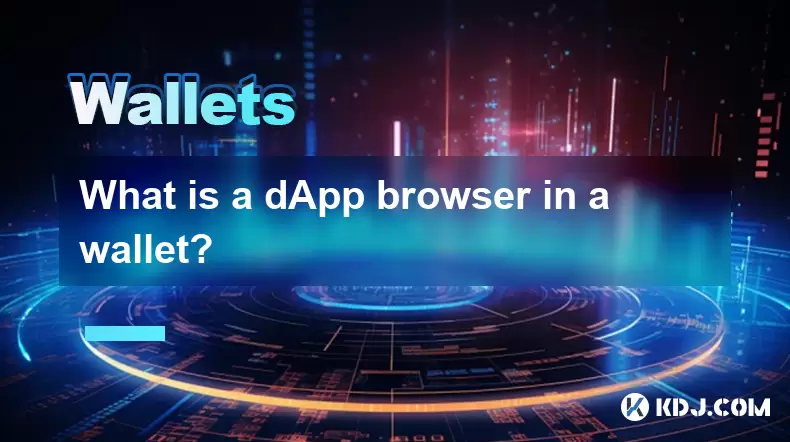
Understanding the dApp Browser in a Wallet
A dApp browser is a feature integrated into many modern cryptocurrency wallets that allows users to directly interact with decentralized applications (dApps) without needing to switch to a separate web browser. This functionality is especially prevalent in mobile wallets like Trust Wallet, MetaMask Mobile, and TokenPocket, where it streamlines access to blockchain-based services.
In this context, a wallet refers to a digital tool used for managing cryptocurrencies and interacting with blockchain networks. When combined with a built-in dApp browser, the wallet becomes a gateway to the decentralized ecosystem, enabling seamless access to various dApps such as DeFi platforms, NFT marketplaces, and blockchain games.
How Does a dApp Browser Work?
A dApp browser operates by connecting to the Ethereum or other EVM-compatible blockchains via a remote node provider. It loads the front-end interface of a dApp—typically hosted on decentralized storage like IPFS—and connects it to the user's wallet address through Web3 injection or walletConnect protocols.
The key steps involved are:
- The user opens the dApp browser inside the wallet app.
- They navigate to a supported dApp URL or search for one within the browser.
- The browser fetches the dApp’s interface and injects the wallet’s Web3 provider.
- Smart contract interactions are signed locally using the user’s private keys.
- Transactions are broadcasted to the network after user confirmation.
This process ensures that users maintain control over their assets while engaging with decentralized services.
Why Use a dApp Browser Within a Wallet?
Using a dApp browser inside a wallet offers several advantages:
- Security: Since transactions are signed locally and never expose private keys, there is reduced risk compared to using third-party browsers.
- Convenience: Users can seamlessly switch between managing funds and using dApps without switching apps.
- Integration: Wallets often provide direct integration with popular dApps, making discovery easier.
- Privacy: No cookies or tracking scripts are stored, enhancing user privacy.
These benefits make the dApp browser an essential component for daily crypto users who engage frequently with decentralized services.
Key Features of a dApp Browser in a Wallet
Modern dApp browsers come equipped with features tailored for blockchain interaction:
- Multi-chain support: Allows browsing dApps across multiple blockchains like Ethereum, Binance Smart Chain, Polygon, and Solana.
- WalletConnect integration: Enables connection to desktop-based dApps through QR codes.
- History and bookmarks: Facilitates quick access to frequently used dApps.
- Transaction management: Displays pending and completed transactions from dApp interactions.
- Network switching: Lets users change blockchain networks without exiting the browser.
These features enhance usability and ensure that users can navigate the decentralized web efficiently.
How to Use a dApp Browser in a Wallet: Step-by-Step Guide
To use a dApp browser within your wallet, follow these detailed steps:
- Open your wallet application (e.g., Trust Wallet or MetaMask).
- Locate and tap on the Browser or DApp Browser tab.
- In the address bar, type the URL of the dApp you wish to visit (e.g., app.uniswap.org).
- Allow the wallet to connect to the dApp by approving the connection request.
- Interact with the dApp interface as needed—swap tokens, stake, or mint NFTs.
- When prompted, review transaction details and sign using your wallet.
Each step must be confirmed manually to prevent unauthorized actions, ensuring full control remains with the user.
Common Issues and Troubleshooting Tips
While using a dApp browser, users may encounter certain issues:
- Unresponsive dApps: Clear cache or try reloading the page.
- Connection errors: Ensure you're on the correct network and have sufficient gas fees.
- Unsupported dApps: Not all dApps are mobile-friendly; try accessing them on desktop if available.
- Slow loading times: Switch to a different RPC server if possible.
- Transaction rejections: Double-check gas fees and network settings before resubmitting.
Understanding how to troubleshoot these problems enhances the overall experience when navigating decentralized services.
Frequently Asked Questions
Can I use any dApp browser with my wallet?
Not all dApp browsers are compatible with every wallet. Most wallets have their own built-in browsers optimized for their environment. However, some support external connections via WalletConnect.
Is it safe to connect a dApp browser to unknown websites?
Always verify the legitimacy of a dApp before connecting. Connecting to malicious sites can lead to phishing attempts or unauthorized transactions.
Do all wallets include a dApp browser?
No, not all wallets come with a built-in dApp browser. Some focus solely on asset storage and transaction signing. Always check wallet features before downloading.
Can I access desktop-only dApps on a mobile dApp browser?
Some dApps are designed specifically for desktop use and may not function properly on mobile browsers. However, many dApps are responsive and work well across devices.
Disclaimer:info@kdj.com
The information provided is not trading advice. kdj.com does not assume any responsibility for any investments made based on the information provided in this article. Cryptocurrencies are highly volatile and it is highly recommended that you invest with caution after thorough research!
If you believe that the content used on this website infringes your copyright, please contact us immediately (info@kdj.com) and we will delete it promptly.
- Toshi.bet: Leading the Crypto Casino Revolution in Poland 2025
- 2025-07-21 20:30:12
- Tether Gold (XAU₮) Expands: Mobee Indonesia & Tokenized Gold's Rising Tide
- 2025-07-21 20:50:12
- BlockDAG's Launch Access: No Vesting, Maximum Opportunity!
- 2025-07-21 21:30:12
- Altcoin Season Heats Up: Cardano Outperforms After Bitcoin Stabilizes
- 2025-07-21 20:50:12
- BlockchainFX: The 1000X Potential Crypto SHIB and DOGE Holders Are Eyeing
- 2025-07-21 21:30:12
- Delhi High Court and the Curious Case of the Missing ₹50 Coin
- 2025-07-21 21:35:13
Related knowledge
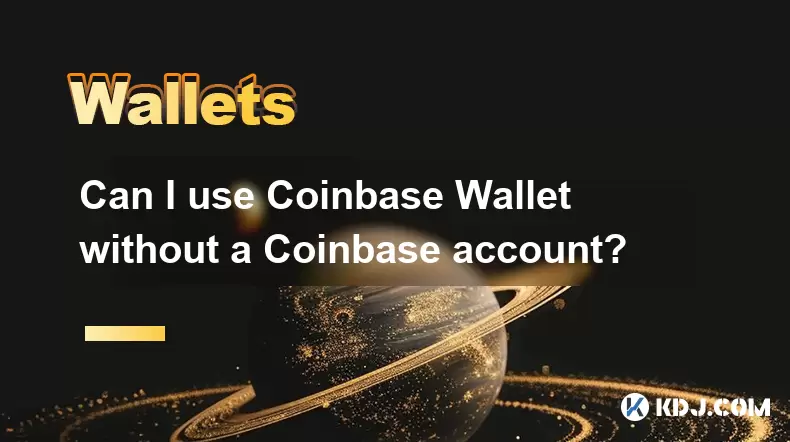
Can I use Coinbase Wallet without a Coinbase account?
Jul 18,2025 at 04:35am
What is Coinbase Wallet?Coinbase Wallet is a self-custodial wallet that allows users to store, send, and receive various cryptocurrencies directly on ...
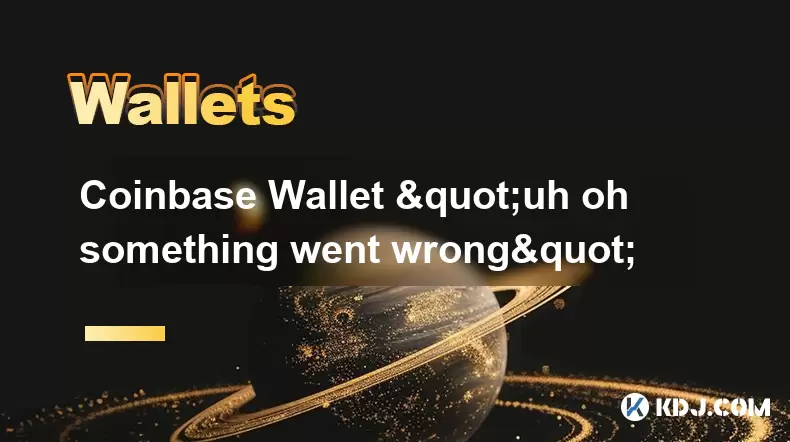
Coinbase Wallet "uh oh something went wrong"
Jul 20,2025 at 10:00am
Understanding the Coinbase Wallet Error: 'Uh Oh, Something Went Wrong'If you're a Coinbase Wallet user, encountering the error message 'Uh Oh, Somethi...
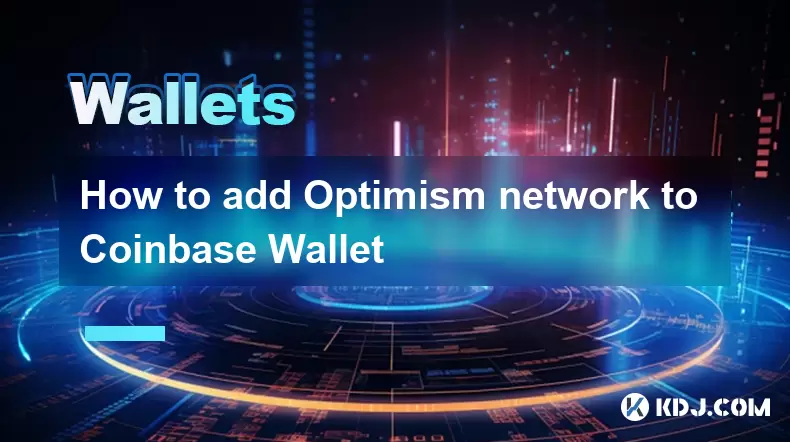
How to add Optimism network to Coinbase Wallet
Jul 20,2025 at 05:21am
What is the Optimism Network?The Optimism network is a Layer 2 scaling solution built on top of the Ethereum blockchain. It aims to enhance transactio...

How to add Arbitrum to Coinbase Wallet
Jul 18,2025 at 03:00pm
Understanding Arbitrum and Its Integration with Coinbase WalletArbitrum is a layer-2 scaling solution developed by Offchain Labs to enhance the speed ...
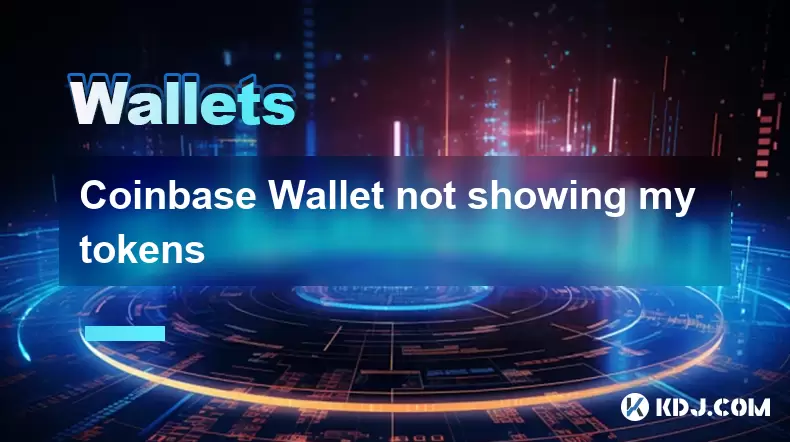
Coinbase Wallet not showing my tokens
Jul 18,2025 at 09:49am
Understanding Coinbase Wallet Token Display IssuesIf you're experiencing issues where Coinbase Wallet not showing my tokens, it can be frustrating, es...
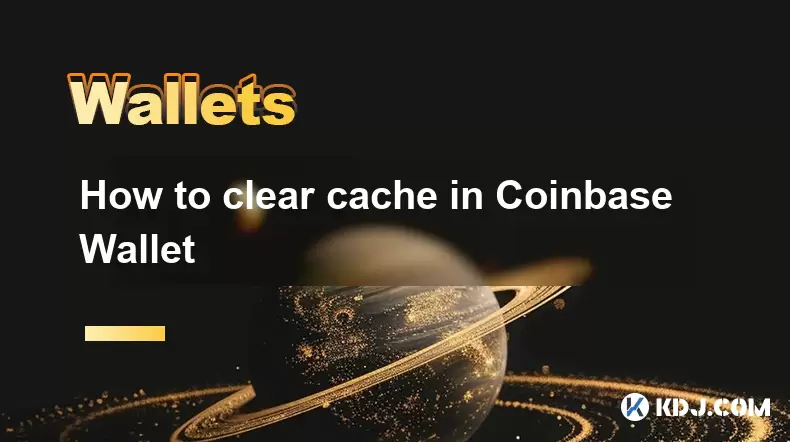
How to clear cache in Coinbase Wallet
Jul 21,2025 at 12:00am
Understanding Cache in Coinbase WalletThe cache in Coinbase Wallet refers to temporary data stored by the application to enhance performance and user ...

Can I use Coinbase Wallet without a Coinbase account?
Jul 18,2025 at 04:35am
What is Coinbase Wallet?Coinbase Wallet is a self-custodial wallet that allows users to store, send, and receive various cryptocurrencies directly on ...

Coinbase Wallet "uh oh something went wrong"
Jul 20,2025 at 10:00am
Understanding the Coinbase Wallet Error: 'Uh Oh, Something Went Wrong'If you're a Coinbase Wallet user, encountering the error message 'Uh Oh, Somethi...

How to add Optimism network to Coinbase Wallet
Jul 20,2025 at 05:21am
What is the Optimism Network?The Optimism network is a Layer 2 scaling solution built on top of the Ethereum blockchain. It aims to enhance transactio...

How to add Arbitrum to Coinbase Wallet
Jul 18,2025 at 03:00pm
Understanding Arbitrum and Its Integration with Coinbase WalletArbitrum is a layer-2 scaling solution developed by Offchain Labs to enhance the speed ...

Coinbase Wallet not showing my tokens
Jul 18,2025 at 09:49am
Understanding Coinbase Wallet Token Display IssuesIf you're experiencing issues where Coinbase Wallet not showing my tokens, it can be frustrating, es...

How to clear cache in Coinbase Wallet
Jul 21,2025 at 12:00am
Understanding Cache in Coinbase WalletThe cache in Coinbase Wallet refers to temporary data stored by the application to enhance performance and user ...
See all articles

























































































